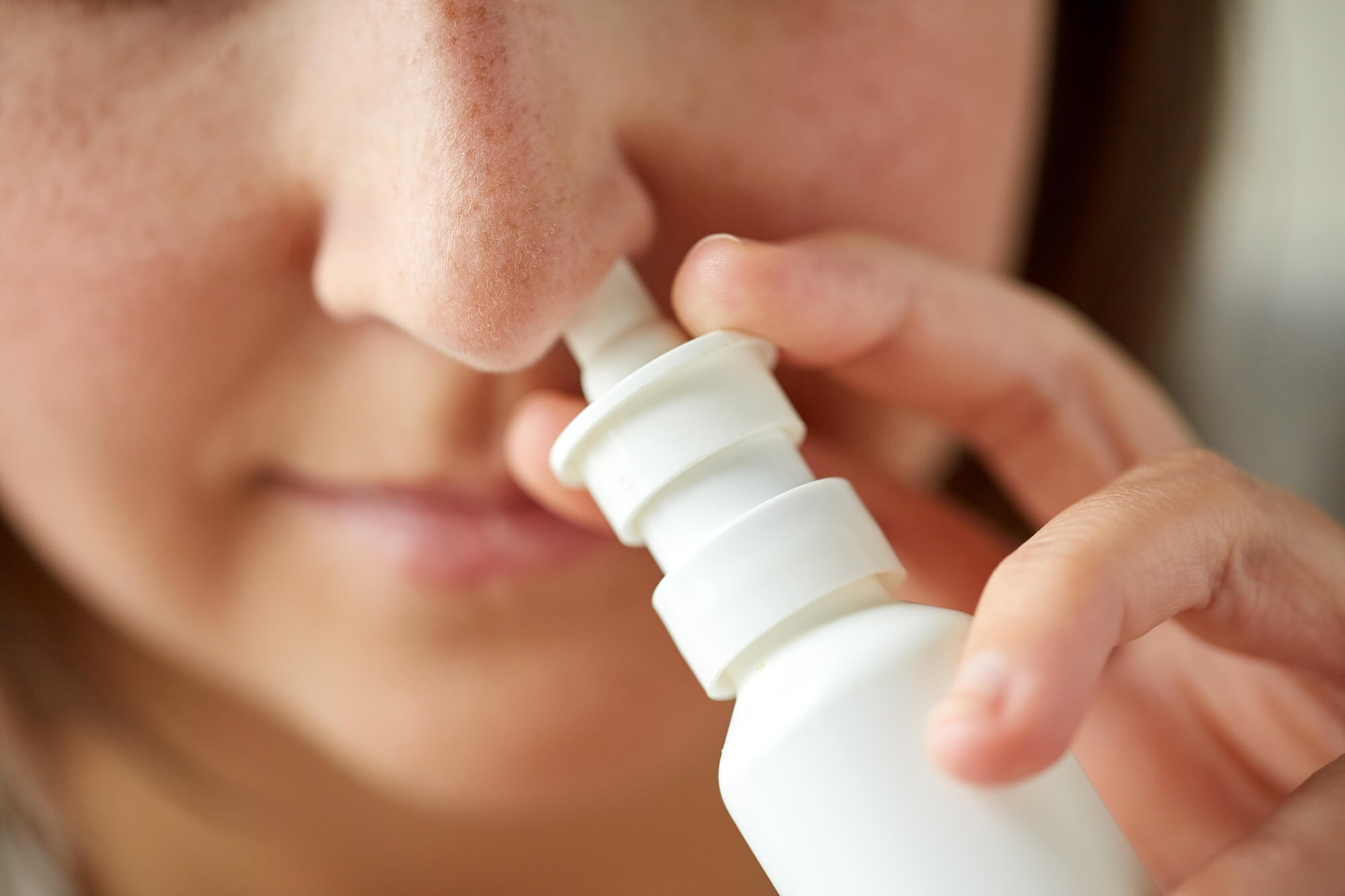
What if stopping a migraine in its tracks was as simple as inhaling? Abortive migraine medication in the form of a nasal spray makes it a possibility.
Nasal mist medications are nothing new, and sprays containing migraine treatment have been available for some time. The list includes triptans, ergotamine, and a nonsteroidal anti-inflammatory called ketorolac.
Here is an overview of migraine treatments in nasal spray form.
Types of Migraine Medication
Migraine medication consists of two types - abortive and preventative.
Abortive medications begin to ease migraine symptoms during an acute attack. You take them as soon as you feel a migraine approach or begin. Most patients (over 90%) take abortive oral medications, which can take 30 minutes or more to work.
Sumatriptan, zolmitriptan, DHE (dihydroergotamine), and ketorolac are available as nasal sprays, which can become effective in as little as 15 minutes.
Preventatives help prevent migraines from occurring. They may be prescribed if your migraines don’t respond well to abortive medications and to reduce the frequency of your migraine attacks.
Preventatives are available in pill or injectable form and include:
- Blood pressure medications such as beta-blockers and calcium channel blockers
- Antiseizure drugs such as topiramate and valproate
- Antidepressants such as amitriptyline
- Calcitonin gene-related peptide (CGRP) monoclonal antibodies
Nasal spray treatments are used most often as abortive medications for various reasons we’ll get into below. However, in a few cases, they may also offer preventative capabilities.
How Does a Nasal Spray Work?
Nasal sprays make their way into your bloodstream directly from the vessels in your nose, bypassing the gastric phase that oral medications must follow.
Your nasal cavity has a large number of blood vessels, providing a direct route to your bloodstream, avoiding breakdown by digestive processes and liver metabolism. Since little of the drug is lost, it has a higher bioavailability than most oral medications.
Since you absorb the medication faster, it gets to work more quickly than an oral abortive. You can feel relief in as little as 15 minutes, twice as fast as the typical oral treatment. Unfortunately, nasal sprays are quickly used up and make poor preventative medications. Also, they don’t reduce the number of migraines you experience.
The Benefits of Nasal Spray Migraine Medications
Obviously, the most beneficial factor in nasal spray treatment is its fast absorption and symptom relief. You not only skip swallowing a pill when you are nauseous, but you also don't need an injection.
Nasal sprays are especially helpful when you commonly vomit during attacks, making it challenging to keep pills down long enough to be effective. If you don't care for needles, then a nasal spray allows you relief without the dread of injections or the wait time you might experience at an urgent care or emergency room.
Nasal spray medications are excellent treatments if you wake up with a migraine or if you can’t start treatment at the beginning of an attack. For example, you can use DHE or ketorolac as a recuse medication if your migraine attack has not responded for several days of the typical treatment.
Using DHE and other nasal abortives can help you avoid infusion therapy, steroids, and injections.
Caution!
Like any medication, there are some possible drawbacks of using nasal sprays. You need to be careful with the number of times you use a nasal spray medication. Also, you cannot use these sprays if you take certain other drugs. Some general guidelines include:
- Do not use a nasal spray migraine medication more than twice in 24 hours or more than three times in seven days. Wait at least one hour between the first and second doses.
- Do not use the nasal spray if you have taken other triptans or ergotamine-type medications in the past 24 hours.
- Do not combine different triptans or triptans with ergotamine medications. Wait at least 24 hours after taking oral DHE before using a triptan nasal spray.
- If you currently take a monoamine oxidase A (MAO-A) inhibitor such as Nardil (phenelzine) or took a dose within the past two weeks, you cannot use a triptan or DHE nasal spray.
- Do not use nasal NSAIDs such as ketorolac on the same day as other NSAID medications like ibuprofen, diclofenac, or naproxen.
Before beginning treatment with any nasal or oral abortive or preventive migraine medication, tell your doctor if you have any conditions that can affect your ability to use these treatments, including:
- Allergies
- Heart disease
- Circulation problems
- High cholesterol
- High blood pressure (hypertension)
- Diabetes
- Liver disease
- Kidney disease
- Obesity
Tell your doctor if you are pregnant or smoke; you must be cautious when using these medications.
All nasal spray medication options require a prescription.
Side Effects of Nasal Spray Medications
If you use a nasal spray medication, you may have one or more of the following known side effects, most of which are not serious:
- Dry mouth
- Irritated, stuffy, or runny nose
- Weakness
- Nausea
- Unusual taste in the mouth
- Dizziness
- Fatigue
- Drowsiness
- Skin sensitivity, numbness, or tingling, especially around the nose
- Pain, pressure, or tightness in your nose, throat, or chest
Follow the directions on the packaging when dealing with side effects.
The Proper Way to Use Nasal Sprays
Read the directions on the packaging to determine whether to spray the medication into one or both nostrils. Keep your head upright as you spray, and do not forcibly inhale through your nose. The intent is to keep the medication from draining down your throat, which impacts its effectiveness.
- Read the instructions on the nasal spray.
- Lightly blow your nose.
- Take the cap off the spray without depressing the plunger.
- Block one nostril by pressing down on it with a finger.
- Place the spray bottle’s tip into the other nostril.
- While breathing in through your nose, spray the liquid.
- Remove the spray bottle tip from your nose.
- Breathe in through your mouth for five to ten seconds.
- Avoid tilting your head far back or sniffling.
Recap your nasal spray bottle and take other measures to reduce symptoms, such as lying in a dark room while waiting for the medication to work.
Summary
Nasal spray medication for migraines is helpful as an abortive but less so as a preventative. Nasal sprays begin to work sooner than oral medications. They are useful when waking up with a migraine or as a rescue medication when other treatments don't work.
Tell your doctor about any medical condition or lifestyle choice that could prohibit or affect the use of nasal sprays, as well as any severe or bothersome side effects once you take the medication.
Use the medication as directed for peak effectiveness and greatest bioavailability.
If you have questions about nasal sprays for migraine treatment. Contact the Migraine Relief Center. We can help you determine if they are the best abortive treatments for your migraines.



